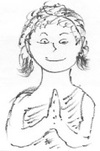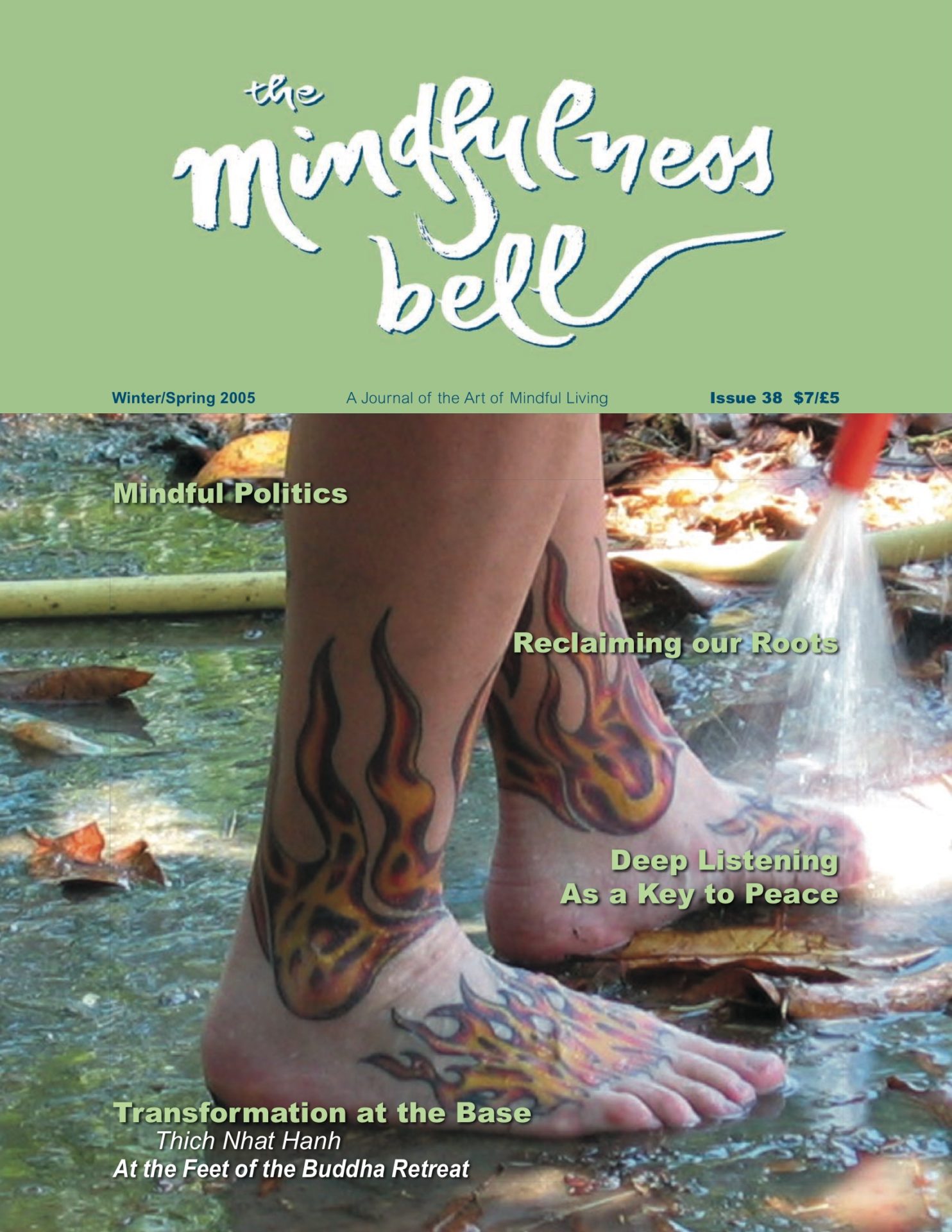An Exercise for Young People
By Terry Masters

Note: What you might say is in boldface. The answers to questions in parenthesis are the answers our children gave us.
Materials Needed: Colored felt-tipped pens
Bowing is a deep form of communicating. A bow may mean hello, thank you, goodbye, or excuse me. But it is not just a way to be polite.
An Exercise for Young People
By Terry Masters

Note: What you might say is in boldface. The answers to questions in parenthesis are the answers our children gave us.
Materials Needed: Colored felt-tipped pens
Bowing is a deep form of communicating. A bow may mean hello, thank you, goodbye, or excuse me. But it is not just a way to be polite. It is a way of recognizing and honoring the Buddha Nature in each of us.
We put our hands together carefully to form a beautiful lotus flower. Then we look at the eyes of the person we will bow to and smile. We say to ourselves, “A lotus for you, Buddha to be!” and bow at our waist. Then we straighten, look at the eyes of the other person and smile. Isn’t that an easy gift to give someone?
Please practice with a friend.
Allow each child time to bow to a friend.
Instead of a lotus, you might want to give something else to a friend or someone in your family. Maybe you will put your hands together, look at the eyes of your friend and say to yourself, “An apple for you Buddha to be.” or ”A sunny day for you Buddha to be.” or “A smile for you Buddha to be!” and then bow.
Give enough time for each child to practice bowing with a different child and with you, “giving” whatever gift they choose to give (a lotus, those suggested above or one of their own choice).
How does it make you feel to bow to someone’s Buddha Nature?
(happy, like I’m watering the seeds of my friend’s happiness)
How does it make you feel when someone bows to you?
(happy, grateful, loved)
When you can, please practice bowing with the people in your family, too.
With the colored pens, invite children to draw simple faces on each other’s thumbs. The “thumb people” can practice bowing respectfully. The “thumb people” might also have conversations with each other or sing to each other.

